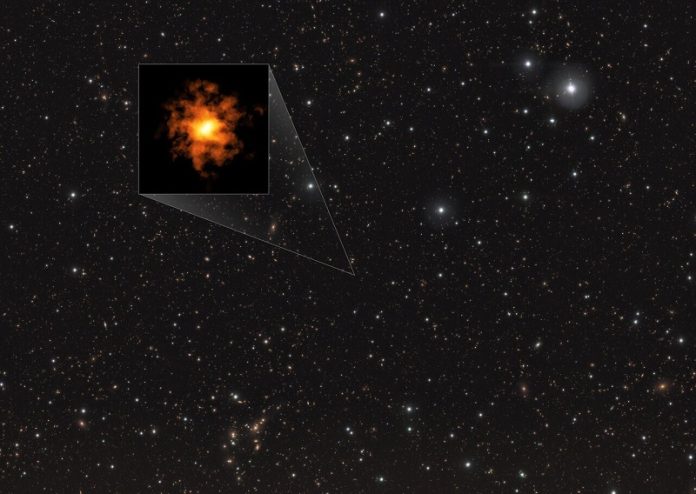
Astronomers have made a groundbreaking discovery of the most distant Milky-Way-like galaxy ever observed, named REBELS-25.
This galaxy, which appears surprisingly orderly, existed when the universe was only 700 million years old—just 5% of its current age.
The discovery was made using the Atacama Large Millimeter/submillimeter Array (ALMA) in Chile, a powerful telescope that helps scientists explore distant parts of the universe.
What makes REBELS-25 so fascinating is that it has a rotating disk, much like our own Milky Way galaxy.
However, scientists didn’t expect such early galaxies to look so structured. According to current theories, galaxies that formed soon after the Big Bang were thought to be much more chaotic and clumpy.
These early galaxies were believed to take billions of years to evolve into the well-organized shapes we see today, like the spiral galaxies we are familiar with.
The team of researchers, led by Jacqueline Hodge and Lucie Rowland from Leiden University in the Netherlands, found that REBELS-25 challenges this timeline.
“We usually expect early galaxies to be small and messy, not neat and orderly,” said Hodge, who was part of the study.
REBELS-25 was first detected in previous ALMA observations, where hints of its rotation were seen. However, the data wasn’t clear enough to confirm the structure of the galaxy.
To solve this, the researchers conducted follow-up observations using ALMA at a higher resolution, which allowed them to see the galaxy’s structure more clearly.
These observations revealed that REBELS-25 is the most distant galaxy ever discovered that shows strong signs of rotating like a disk.
This discovery was surprising because it shows that galaxies could have formed organized structures much earlier than previously thought.
“Seeing a galaxy like REBELS-25, with a clear rotation pattern, challenges our understanding of how quickly galaxies in the early universe evolved into the organized systems we see today,” said Rowland, the study’s lead author.
Even more intriguing, the researchers found hints that REBELS-25 may have developed features similar to the Milky Way, such as a central bar or even spiral arms.
These features would suggest that the galaxy is even more evolved than initially believed. However, further observations are needed to confirm these details.
This discovery opens up exciting new possibilities for studying early galaxies and how they formed. Future observations of REBELS-25 and other early rotating galaxies could change our understanding of how the universe and its galaxies evolved over time.
Scientists are eager to learn more about these distant galaxies and what they can tell us about the early universe.



